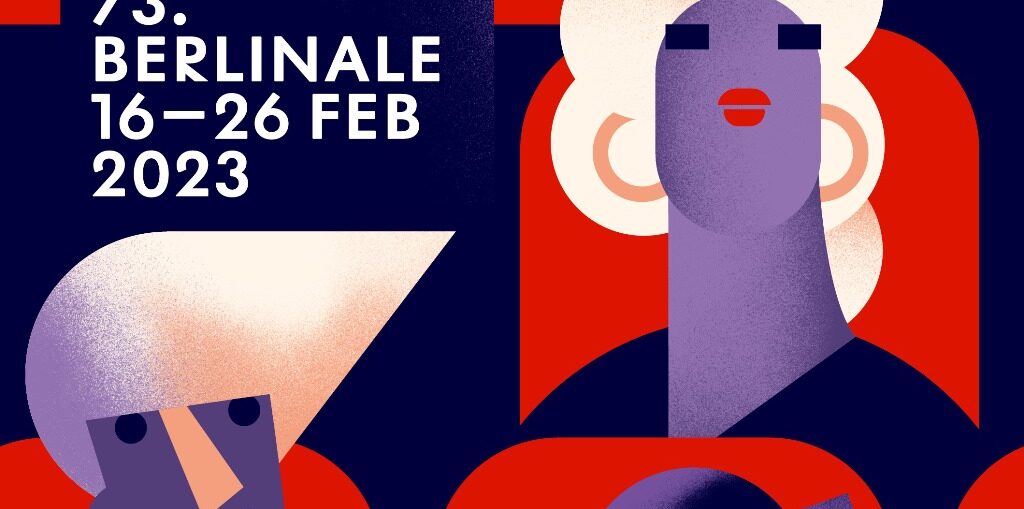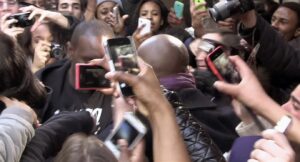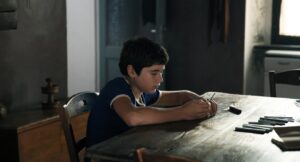
(Berlin Luigi Noera with the kind collaboration of Marina fearful- Photos are published courtesy of the Berlinale)
 A doc that praises the seventh art will find its place among documentaries aimed at the new generations.
A doc that praises the seventh art will find its place among documentaries aimed at the new generations.
And the King Said, What a Fantastic Machine di A. Danielson e M. Van Aertryck
The documentary is built with the found footage technique and has a plot divided into two parts, partially overlapping.
The introduction opens in a darkroom, set up in a public place where spectators are invited to take advantage of the spectacle of passers-by, giving him the opportunity to marvel at something very ancient and yet which is the basis of modern technologies.
This part, then rigorously follows the history of cinema manuals and explains how photography and its derivations were born, starting from Niépce, passing through Méliès up to the modern shots taken in the days of the earthquake in Haiti (2010). From this point on, the historical plot softens to share the narrative with more philosophical reflections.
With drama and sarcasm, important sequences for the history of humanity will continue to alternate with others of an entertaining nature, to support the reflections on the image carried out by the voice over.
The film, initially pedagogical but attractive, tends to lose this historical rigidity for interesting reflections of an ambiguous nature, apex perhaps reached by the sequence dedicated to Leni Riefenstahl, famous German director.
These reflections even if interesting and accompanied by a skilful editing, they tend to lose their strength as you only skim the surface.
Many current issues are mentioned: such as the unhealthy use of social networks and everything that involves aligning with a certain algorithm, up to the spectacularization of Donald Trump's electoral campaign.
The main problem is the heterogeneity of the topics that are discussed and which range from reflections on the photographic pose, up to the excessive use of Twitch made by Lifestreamers.
I believe that today all the arguments they have chosen have great relevance and deserve the right space for reflection; in this movie instead, so much is the desire to list them that one ends up creating a swirling mix tending towards chaos.
Images have assumed such a central role in our society, so much so that by many it is assigned the adjective of "iconocentric", and it is impossible today, simultaneously follow all the implications that this entails.
However, as the two directors say, Axel Danielson and Maximilien Van Aertryck, in the interview done for Cineuropa in January, the documentary aims to help the viewer in the literacy of images, thus making their contribution to UNESCO (MIL-Media and information litteracy of which they are a part).
So, the directors have succeeded in their aim of creating an educational film but this seems to be disorienting at times.
 Instead, among the Italian works we point out a debut film:The property of metals, the debut of Antonio Bigini
Instead, among the Italian works we point out a debut film:The property of metals, the debut of Antonio Bigini
Presented at the Berlinale Generation Kplus, the debut feature film by Antonio Bigini chooses rural Italy in the 1970s as its narrative context, for a story that explores the limits of human understanding.
The plot proceeds linearly: a university professor takes as a case study a child who can bend metal with his thoughts, inspired by past reports on Uri Geller.
Pietro (Martin Zaccara), the young protagonist, she lives in a complicated situation with a father (Antonio Buil Pueyo) tough and heavily in debt and an inpatient grandmother to take care of.
The incomprehension of the adult world towards Pietro is total. They are not present, indeed, significant dialogues between him and other adults who are not the American professor (David Easter), who takes it into consideration. Symbolic in this, the conversation between the young man and the father, the latter after learning of a possible cash reward, he asks his son if he wants something at the bar, but the boy only chooses a popsicle, explicit metaphor of their arid relationship.
The director chooses a sober style (like the photography of Andrea Vaccari) which allows the viewer to immerse himself in the story, through the invisibility of the staging; however, Bigini, manages to create suspense in a natural and well-calibrated way, also thanks to the excellent acting tests.
In addition to narrating a story, the film investigates the senses and their limits; conspicuous about it, the reference to the theme of synesthesia "sensorial-perceptive phenomenon in which certain stimuli evoke a sensation of a different nature from that normally experienced".
In addition to these investigations of a more complex nature, we see a continuous mention of the limit of our senses such as hearing, with which we can indeed hear but not understand.
The limit of the view is also well expressed several times, for example from the scenography present in the professor's study, surrounded by photographic prints and a huge poster of a microscope: two tools with which, par excellence, we can see “beyond” our limits.
Matthias Dell'Omo
Ed: Antonio Bigini also shows the sociological difference between the simple but concrete peasant world with the problem of daily survival and the world of culture all aimed at pure knowledge which is the paranormal phenomenon of the little protagonist capable of bending metal bars. Two faces of humanity.
“The world is full of unseen forces. But people ended up not believing it anymore".
Synopsis: An assortment of metal objects are spread out on the kitchen table in front of Pietro. Closing my eyes, he cautiously reaches out his hand. The news of the boy's psychokinetic abilities has traveled far beyond the confines of the small Italian village; they say he can bend more than just spoons. When a university professor starts to visit Pietro regularly, experiments are a welcome distraction, because despite the idyllic beauty of the landscape, life here is hard: unpaid debts hang in the air, along with unhealed wounds in the family history. A portrait of a world in turmoil; of a place and a time where a boy's gift seems a beacon of hope, bearer of promises of a better life.
